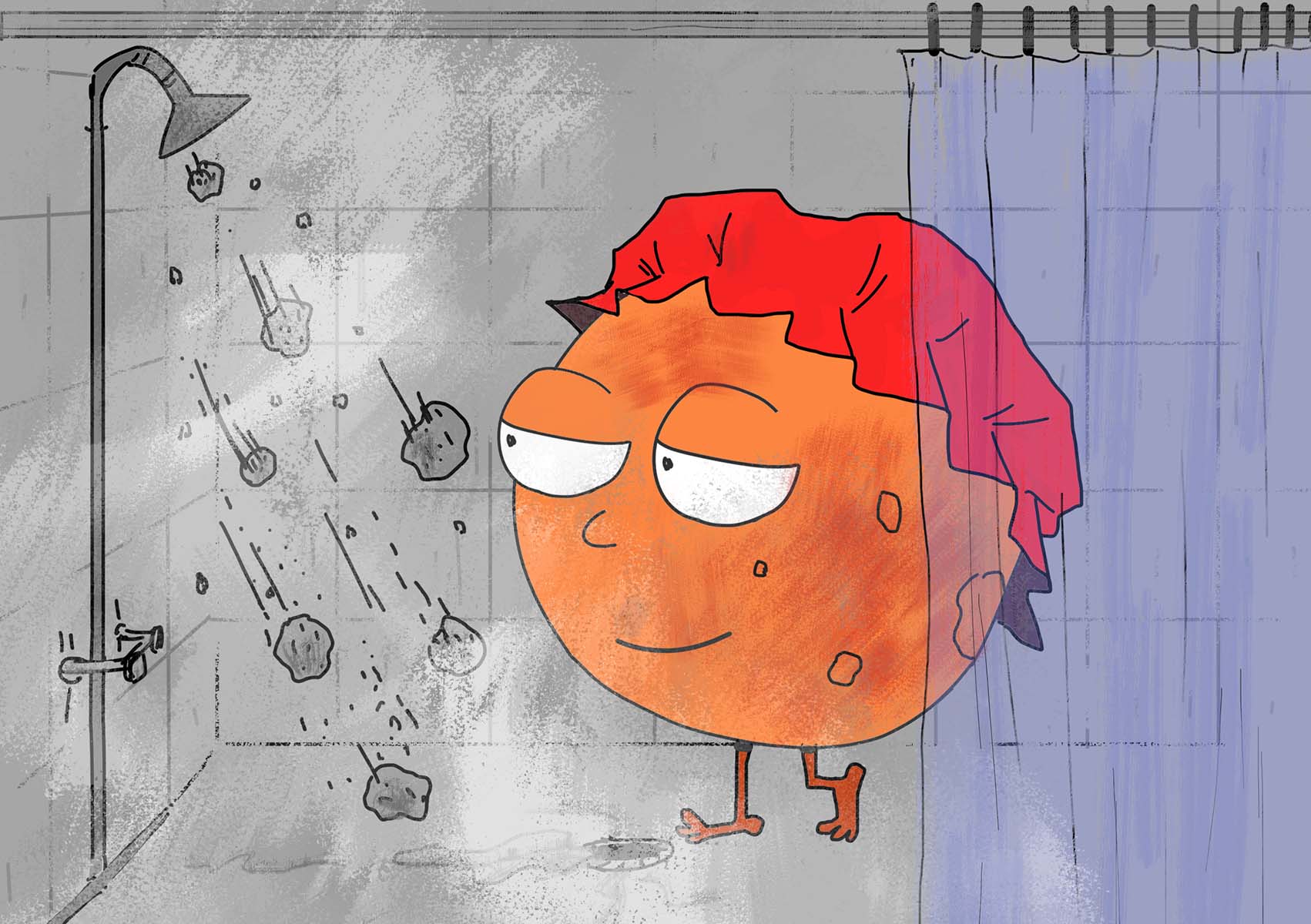Planetoïden en kometen overspoelen Mars met organisch materiaal
Planetoïden en kometen blijken een veel belangrijkere leverancier te zijn van organisch materiaal op Mars dan gedacht. Tot nu toe gingen astronomen ervan uit dat het organisch materiaal op Mars voornamelijk van stofdeeltjes uit de ruimte komt. Computersimulaties van een internationaal team van onderzoekers onder leiding van Nederlandse sterrenkundigen duiden er nu op dat een derde van het materiaal afkomstig is van planetoïden en kometen. De bevindingen zijn geaccepteerd voor publicatie in het wetenschappelijke tijdschrift Icarus.

In 2015 ontdekte de Marsrover Curiosity overblijfselen van organische moleculen op Mars. Wetenschappers vroegen zich af hoe die organische moleculen op Mars terecht waren gekomen. De heersende theorie was dat de moleculen waren meegelift op interplanetaire stofdeeltjes. Die deeltjes zijn overal. Rond de aarde zien we de stofdeeltjes bijvoorbeeld als ze onze atmosfeer binnendringen en voor 'vallende sterren' zorgen.
Een internationaal team van onderzoekers, werkzaam bij SRON Netherlands Institute for Space Research, de Rijksuniversiteit Groningen, Universiteit Utrecht en de University of California Santa Barbara, vermoedde dat de theorie van de stofdeeltjes niet het hele verhaal kon zijn. De wetenschappers dachten dat een deel van de organische moleculen best eens geleverd zou kunnen worden door planetoïden en kometen. Om dat te onderzoeken, bouwden ze een computermodel van de zon, de planeten en honderdduizenden planetoïden en kometen. Vervolgens lieten ze Peregrine, de supercomputer van de Rijksuniversiteit Groningen, een paar weken aan het computermodel rekenen.
Uit de berekeningen blijkt dat er per jaar 192 ton koolstof op Mars terechtkomt. Dat is vergelijkbaar met 8 zandwagens. Daarvan komt ongeveer 129 ton (67%) van interplanetaire stofdeeltjes. Maar planetoïden leveren ook nog eens 50 ton per jaar (26%) en kometen zorgen voor zo'n 13 ton (7%) van het organische materiaal.
Het onderzoek heeft gevolgen voor toekomstige en huidige Marsmissies. Marsrovers zouden, zo stellen de astronomen, eens goed moeten kijken in de buurt van de inslagkraters van planetoïden. Op die plekken zou namelijk heel wat organisch materiaal te vinden kunnen zijn.
Verder heeft het onderzoek ook implicaties voor de kans op leven op exoplaneten. De Groningse PhD-student Kateryna Frantseva die het onderzoek leidde, licht toe: "Bij andere sterren zijn er namelijk ook exo-planetoïden en exokometen. Die kunnen de oppervlakken van exoplaneten voorzien van koolstof. Als er dan ook nog water aanwezig is, dan heb je in ieder geval de vereiste ingrediënten voor leven."
De onderzoekers richten hun pijlen nu op de planeet Mercurius, waar water is gevonden. Ze willen inschatten hoeveel water op Mercurius kan worden afgeleverd door planetoïden en kometen. Daarna willen ze hun onderzoek uitbreiden naar planeetstelsels rond andere sterren.
